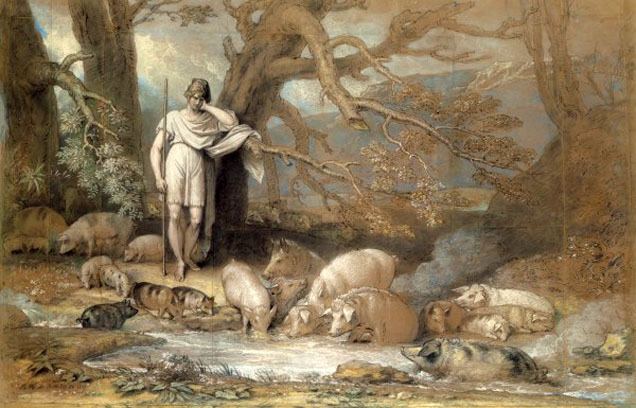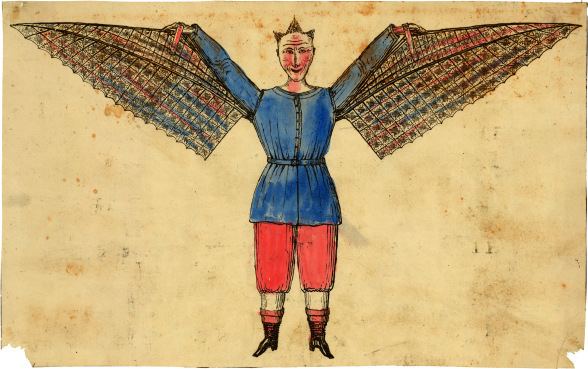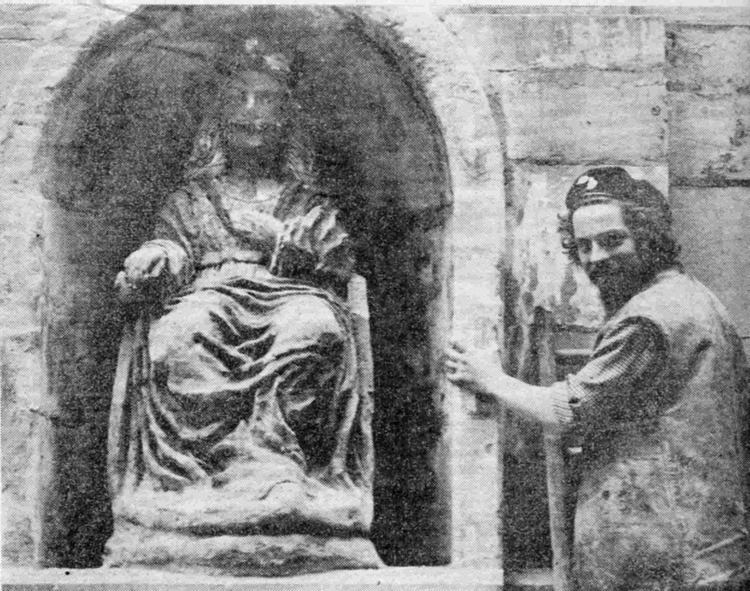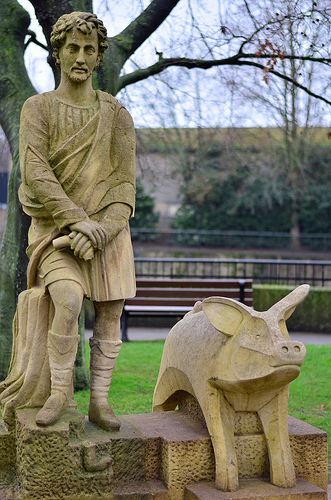Parents Rud Hud Hudibras | ||
 | ||
The strange tale of bladud of bath
Bladud or Blaiddyd was a legendary king of the Britons, for whose existence there is no historical evidence. He is first mentioned in Geoffrey of Monmouth's Historia Regum Britanniae, which describes him as the son of King Rud Hud Hudibras, and the tenth ruler in line from the first King, Brutus. A Bleydiud son of Caratauc is mentioned in the Welsh Harleian MS 3859 genealogies, suggesting to some that Geoffrey misinterpreted a scrap of Welsh genealogy (such as the Harleian genealogies or a related text). The Welsh form of the name is given as Blaiddyd in manuscripts of the Brut Tysilio (Welsh translations of Geoffrey's Historia). The meaning of the name is "Wolf-lord" (Welsh blaidd "wolf" + iudd "lord"). In the text he is said to have founded the city of Bath. He was succeeded by his son Leir (King Lear).
Contents

The tale of Bladud was later embellished by other authors, such as John Hardyng and John Higgins, writing in the sixteenth century.

Legend

According to the final form of the legend, Bladud was sent by his father to be educated in the liberal arts in Athens. After his father's death he returned, with four philosophers, and founded a university at Stamford in Lincolnshire, which flourished until it was suppressed by Saint Augustine of Canterbury on account of heresies which were taught there. Supposedly he ruled for twenty years from 863 BC or perhaps 500 BC, in which time he built Kaerbadum or Caervaddon (Bath), creating the hot springs there by the use of magic. He dedicated the city to the goddess Athena or Minerva, and in honour of her lit undying fires, whose flames turned to balls of stone as they grew low, with new ones springing up in their stead: an embellishment of an account from the fourth-century writer Solinus of the use of local coal on the altars of her temple.
Leprosy

He is said to have founded the city because while he was in Athens he contracted leprosy, and when he returned home he was imprisoned as a result, but escaped and went far off to go into hiding. He found employment as a swineherd at Swainswick, about two miles from the later site of Bath, and noticed that his pigs would go into an alder-moor in cold weather and return covered in black mud. He found that the mud was warm, and that they did it to enjoy the heat. He also noticed that the pigs which did this did not suffer from skin diseases as others did, and on trying the mud bath himself found that he was cured of his leprosy. He was then restored to his position as heir-apparent to his father, and founded Bath so that others might also benefit as he had done.
Necromancy
The tale claims that he also encouraged the practice of necromancy, or divination through the spirits of the dead. Through this practice, he is said to have constructed wings for himself and to have tried to fly to (or from) the temple of Apollo in Trinovantum (London) or Troja Nova (New Troy), but to have been killed when he hit a wall, or to have fallen and been dashed to pieces or broken his neck. He was supposedly buried at New Troy and succeeded by his son, Leir. Eighteenth century Bath architect John Wood, the Elder wrote about Bladud, and put forth the fanciful suggestion that he should be identified with Abaris the Hyperborean, the healer known from Classical Greek sources.
